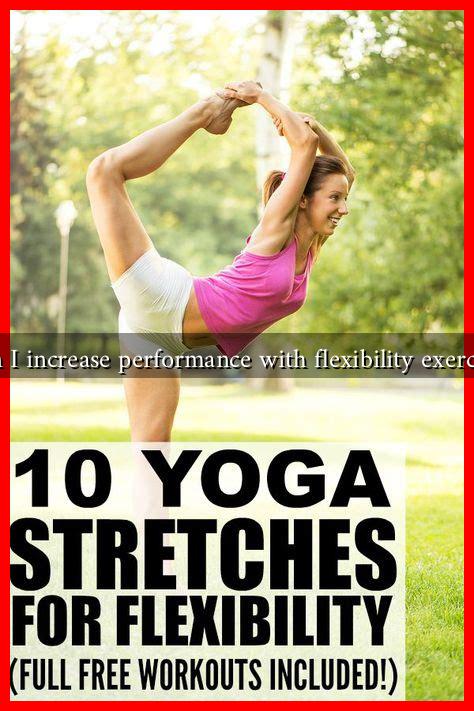-
Table of Contents
Can I Increase Performance with Flexibility Exercises?
Flexibility exercises have long been associated with improved range of motion and injury prevention. However, many athletes and fitness enthusiasts wonder if these exercises can also enhance overall performance. This article delves into the relationship between flexibility and performance, exploring the benefits, types of flexibility exercises, and the science behind them.
The Importance of Flexibility in Performance
Flexibility refers to the ability of a joint or series of joints to move through an unrestricted, pain-free range of motion. It plays a crucial role in various physical activities, from sports to daily tasks. Here are some key reasons why flexibility is essential for performance:
- Injury Prevention: Flexible muscles and joints are less prone to strains and sprains. A study published in the *American Journal of Sports Medicine* found that athletes with greater flexibility had a lower incidence of injuries.
- Improved Posture: Flexibility exercises can help correct muscle imbalances, leading to better posture. Good posture enhances performance by allowing for more efficient movement patterns.
- Enhanced Muscle Function: Flexibility can improve muscle function by allowing for greater force production and power output. This is particularly important in sports that require explosive movements.
Types of Flexibility Exercises
Flexibility exercises can be categorized into several types, each with its unique benefits:
- Static Stretching: Involves holding a stretch for a prolonged period, typically 15-60 seconds. This type of stretching is effective for increasing overall flexibility and is best performed after workouts.
- Dynamic Stretching: Involves moving parts of your body through a full range of motion in a controlled manner. This type of stretching is ideal for warming up before physical activity, as it prepares the muscles for action.
- PNF Stretching: Proprioceptive Neuromuscular Facilitation (PNF) involves a combination of stretching and contracting the muscle group being targeted. This method has been shown to increase flexibility more effectively than static stretching alone.
The Science Behind Flexibility and Performance
Research supports the notion that flexibility can enhance performance, particularly in sports that require agility, speed, and strength. A study published in the *Journal of Strength and Conditioning Research* found that athletes who incorporated flexibility training into their routines experienced significant improvements in their performance metrics, including sprint times and vertical jumps.
Moreover, flexibility training can lead to better neuromuscular coordination. When muscles are flexible, they can respond more effectively to the demands of physical activity, allowing for quicker and more powerful movements. This is particularly beneficial in sports like basketball, soccer, and gymnastics, where agility and explosive power are crucial.
Case Studies and Real-World Examples
Several athletes and teams have successfully integrated flexibility training into their routines, leading to improved performance:
- NBA Players: Many professional basketball players, such as LeBron James, incorporate yoga and flexibility training into their regimen to enhance their agility and reduce injury risk.
- Track and Field Athletes: Sprinters and jumpers often engage in dynamic stretching routines before competitions to optimize their performance and prevent injuries.
- Gymnasts: Flexibility is a fundamental aspect of gymnastics training, as it allows athletes to perform complex movements with grace and precision.
Conclusion
In conclusion, flexibility exercises can significantly enhance athletic performance by improving range of motion, preventing injuries, and optimizing muscle function. Incorporating a variety of flexibility training methods—such as static, dynamic, and PNF stretching—into your fitness routine can lead to better overall performance in sports and physical activities. As research continues to support the benefits of flexibility, athletes and fitness enthusiasts alike should prioritize these exercises to unlock their full potential.
For more information on flexibility training and its benefits, consider visiting resources like the American Council on Exercise.

